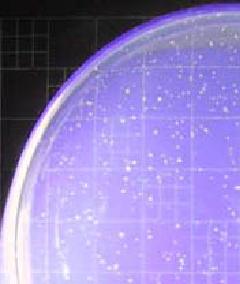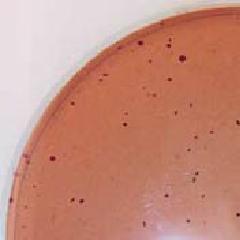- Yokohama-shi Top Page
- Health, medical care, welfare
- Health, medical care
- Food safety
- Food Sanitation Laboratory
- Bacterial testing
- Pollution indicator bacteria inspection
The text is from here.
Pollution indicator bacteria inspection
Last updated on April 2, 2024.
What is contaminated indicator bacteria?
It is inspected to understand the status of contamination of microorganisms such as food, cooking utensils, and fingers, and to objectively evaluate the suitability of hygiene management.
Contamination index bacteria include "general bacteria count", "E. coliform group", and "E. coli".
By examining these bacteria, it is possible to infer the degree of contamination and the presence or absence of pathogenic bacteria.
Number of common bacteria

Colonies in standard agar medium
The number of bacteria that exist in food and are cultivated and detected at 35 ° C in aerobic (needing oxygen).
The number of common bacteria reflects the bacterial contamination of food and the entire environment in which they were produced, and most of the causative bacteria of infectious diseases caused by food grow well at around 35 ° C. It is an extremely powerful indicator when comprehensively evaluating the safety, preservation, and hygienic handling.
Although general bacteria numbers do not directly indicate safety, high general bacteria indicate the presence of pathogens and the possibility that those bacteria may be growing.
Inspection methods
Using a standard agar medium, all the grown colonies are counted and the general number of bacteria per gram of food is calculated.
Escherichia coliform

Escherichia coliform in desoxycolate agar medium
In drinking water, etc., it is regarded as an index of feces contamination, but in food, it is mainly an index of heating.
- Foods for which ingredient standards for coliforms are set
- Milk, dairy products, soft drinks, ice and snow
- Heated meat products (heated after packaging), fish meat kneaded products
- Non-heated Frozen Foods
- Frozen food consumed after heating just before freezing
- Ice cracker
- Frozen boiled octopus, whale meat products
Inspection methods
- Method using desoxycolate agar medium (e.g. ice crackers)
If dark red colonies are observed after culture, the estimated test will be positive, and a final test will be conducted on the EMB medium, and a complete test will be conducted with lactose bouillon and gram dyeing.
- Methods using BGLB medium and LB mediums (soft drinks, fish meat kneaded products, etc.)
Sample fluid is added to the medium containing the fermentation tube and cultured. If gas is generated, a final test and complete test are performed.
Escherichia coli (E.coli)
These means that there was relatively new feces contamination directly or indirectly because they are more likely to exist in human and animal feces than Escherichia coli group and easily die in nature. If detected, it is highly likely that intestinal pathogens will be contaminated.
Applies to unheated foods such as raw vegetables, raw meat, and seafood that reflect contamination from nature as it is.
- Foods with Escherichia coli ingredient standards set
- Part of meat products, raw oysters
- Frozen foods taken after heating that has not been heated before freezing
However, Escherichia coli defined in these standards is exactly the fecal coliform group.
Inspection methods
It is determined by the production of gas using an EC medium. In the case of gas production, final tests and complete tests may be conducted.
Other contamination indicator bacteria
Other contamination indicator bacteria include "intestinal bacteria, low-temperature bacteria, high-temperature bacteria, and spores".
Inquiries to this page
Medical Care Bureau Health and Safety Department Central Wholesale Market Food Sanitation Laboratory
Phone: 045-441-1153
Phone: 045-441-1153
Fax: 045-441-8009
E-Mail address [email protected]
Page ID: 388-580-172







